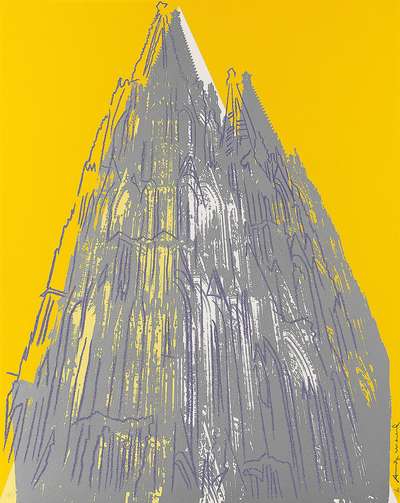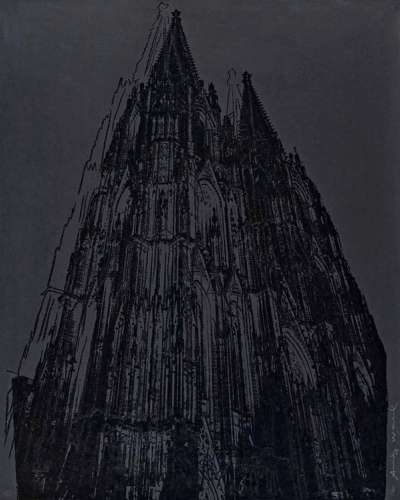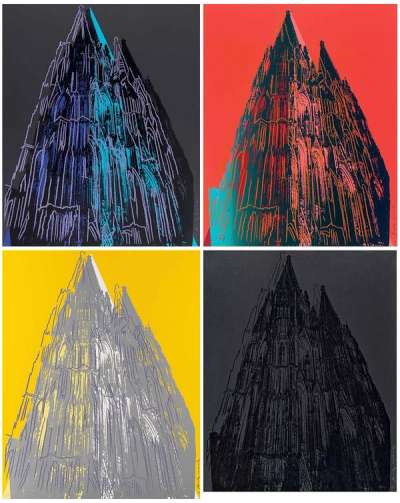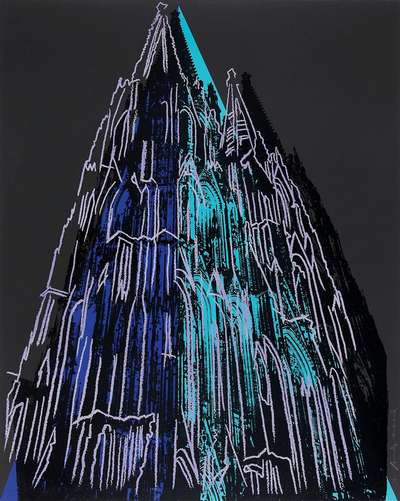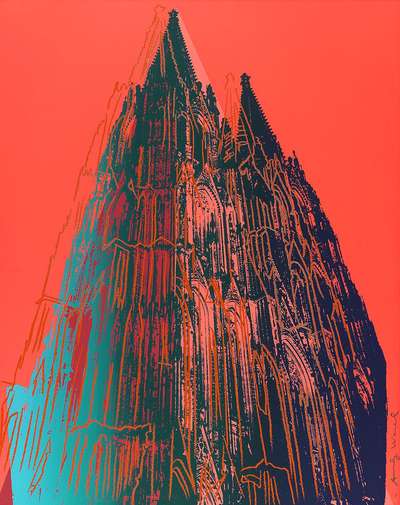
Cologne Cathedral

Cologne Cathedral
Signed Print
Andy Warhol
Price data unavailable
AAGR (5 years) This estimate blends recent public auction records with our own private sale data and network demand.
There aren't enough data points on this work for a comprehensive result. Please speak to a specialist by making an enquiry.
Medium: Screenprint
Edition size: 60
Year: 1985
Size: H 125cm x W 104cm
Signed: Yes
Format: Signed Print
TradingFloor
Track this artwork in realtime
Watch artwork, manage valuations, track your portfolio and return against your collection
Meaning & Analysis
Cologne Cathedral is a signed screen print with diamond dust on Lenox Museum Board produced by Andy Warhol in 1985. The print comes in an edition size of 60 and shows the impressive Cologne Cathedral in Cologne, Germany. The cathedral is Germany’s most visited landmark and draws in visitors from all over the world. By rendering the cathedral in his signature Pop Art style the building, which carries a significant cultural, religious and historical heritage, becomes a Pop Art icon which can be seen alongside Warhol’s Campbell’s Soup Cans and Diamond Dust Shoes.
The print is part of the Cologne Cathedral collection, a series of four prints, all of which depict the famous cathedral. While the prints all capture the cathedral from the same front-on angle, they vary in colour and level of detail. In this print, Warhol uses a variety of bright and vibrant crayon-like lines to delineate the building and its Gothic architecture. The pink, yellow and red lines are set against a bright turquoise backdrop. Cologne Cathedral is the most dynamic print of the collection in terms of colour used and contrasts markedly with Cologne Cathedral (F. & S. II.364) in which Warhol uses a restricted palette of grey tones.
Warhol simplifies the details of the cathedral through the screen printing process and in doing so draws attention to the form of the building and its general beauty.
